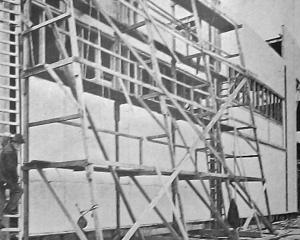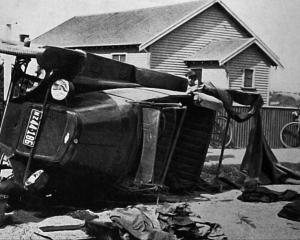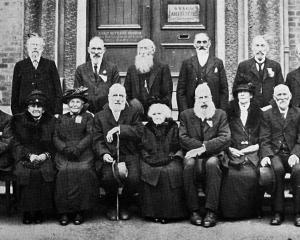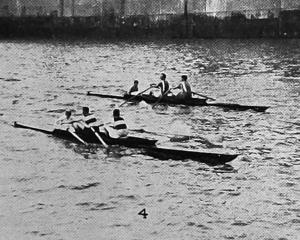
Immediately then came the eight bridesmaids for whom the bride had chosen beautiful dresses of white and silver, to be in accord with the general scheme. Princess Maud, Lady Rachel Cavendish, Lady Mary Thynne, Lady Victoria Cambridge, Lady Doris Gordon-Lennox, Lady Elizabeth Bowes-Lyon, Lady Diana Bridgeman, and Lady May Cambridge were all dressed alike save that the two last- named had shorter frocks. They wore straight gowns of cloth of silver made in panels opening at the side to show the under-robe of ivory and satin anglaise. The girdles were embroidered in mother-of-pearl pailette and silver-lined crystals and at one side a huge silver rose of England was caught with a true lover's knot of Princess Mary’s favourite blue. The lace sleeves and upper corsage were lined with flesh pink chiffon. The bridesmaids’ head-dresses were wreaths of silver leaves with diamante centres, worn over veils of white tulle falling below the waist. They carried bouquets of pink sweet peas caught with silver ribbon streamers.
Temperance Rechabites’ Lodge aim
A public meeting in connection with the visit of Past High Chief Ruler, Bro A.H. Lear Caton, of the Ancient Order of Rechabites, was held in the YMCA rooms last evening. Provincial Chief Ruler, A.V. Gain, said that they had met that night on a very auspicious occasion — to celebrate the jubilee of the Independent Order of Rechabites in New Zealand. To commemorate the occasion they had been favoured with a visit of their District Chief Ruler (Bro Farrant) and also their Past High Chief Ruler, Bro Caton, the accredited representatives from the Homeland. The progress made by their order during the past 50 years of existence in New Zealand, as well as throughout the Empire, had been very pronounced, and today their total membership stood at over 1 million and a quarter.
The order, he continued, stood for the total abolition of intoxicating liquor, to clear their fair land of the greatest curse that had ever afflicted it. He hoped and trusted that this year they would have a victory in their fight. (Applause.) Mrs Hiett, president of the Women's Christian Temperance Union of Dunedin, welcomed Bro Caton on behalf of her union. Her union stood shoulder to shoulder with the order in its aim to abolish the liquor traffic.
Amenities Society’s falling roll
At the 33rd annual meeting of the Dunedin Amenities Town Planning Society held in the Town Hall, the president (Mr A. Bathgate) said the most important work, perhaps, was the spending of money in the Woodhaugh Gardens, which was carried out in connection with finding works for the unemployed. The work done had extended the grounds available for children's picnic parties. They would notice that the membership last year was 185, but this year dropped to 160. He thought that it was rather deplorable that in a city like Dunedin there were only 160 people willing to subscribe a modest 5 shillings to help them to beautify their city. Since the advent of Mr Tannock, the society had found that it was the best plan to avail itself of his services, and to suggest to the council that certain work should be done, the society contributing to the cost. The greater proportion of their suggestions were adopted, and they found the City Council very willing to assist in this plan Many of the improvements which had been carried out in the city would never have been done had the society not been in existence.
Painters want house inspections
Wellington: Statements were made to the Minister of Health (the Hon C.J. Parr) by a deputation from the executive of the New Zealand Federation of Master Painters that there was need for more inspection of the interiors of houses. Better than most people the painters knew the insides of houses, and they appreciated the Minister insisting on cleanliness and sanitation. They desired that an interior inspection should be carried out. At present front yards, back yards, and sinks were inspected, and that was as far as the inspection went. The president said that the bugs were ordinary house bugs, found behind pictures and under scrim. Old scrim, especially on ceilings, provided a harbour for numerous bugs. If what they suggested were done, they felt, instead of covering up old scrim, they could appeal to the Minister with a view to having insanitary scrim cut out.
-- ODT, 12.4.1922












